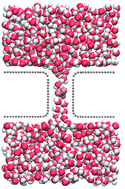Quantifying barriers to monovalent anion transport in narrow non-polar pores
Abstract
The transport of anionic drinking

* Corresponding authors
a School of Engineering and Physical Sciences, Heriot-Watt University, Edinburgh, United Kingdom
b School of Engineering, The University of Edinburgh, Edinburgh, United Kingdom
c
Research School of Biology, Australian National University, Canberra, Australia
E-mail:
ben.corry@anu.edu.au
The transport of anionic drinking

 Please wait while we load your content...
Something went wrong. Try again?
Please wait while we load your content...
Something went wrong. Try again?
L. A. Richards, A. I. Schäfer, B. S. Richards and B. Corry, Phys. Chem. Chem. Phys., 2012, 14, 11633 DOI: 10.1039/C2CP41641G
To request permission to reproduce material from this article, please go to the Copyright Clearance Center request page.
If you are an author contributing to an RSC publication, you do not need to request permission provided correct acknowledgement is given.
If you are the author of this article, you do not need to request permission to reproduce figures and diagrams provided correct acknowledgement is given. If you want to reproduce the whole article in a third-party publication (excluding your thesis/dissertation for which permission is not required) please go to the Copyright Clearance Center request page.
Read more about how to correctly acknowledge RSC content.
 Fetching data from CrossRef.
Fetching data from CrossRef.
This may take some time to load.
Loading related content
